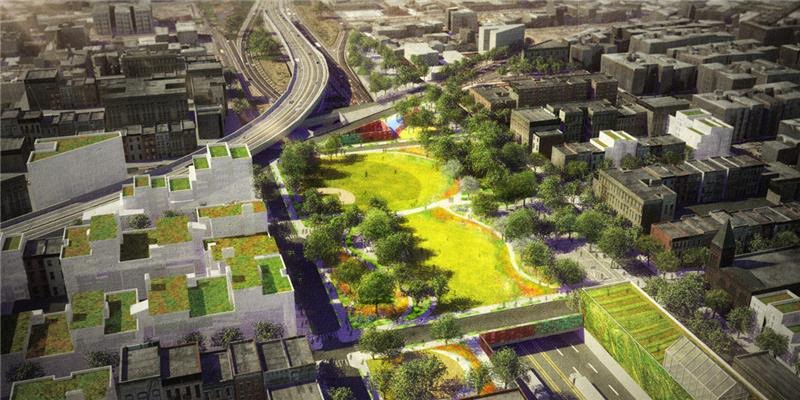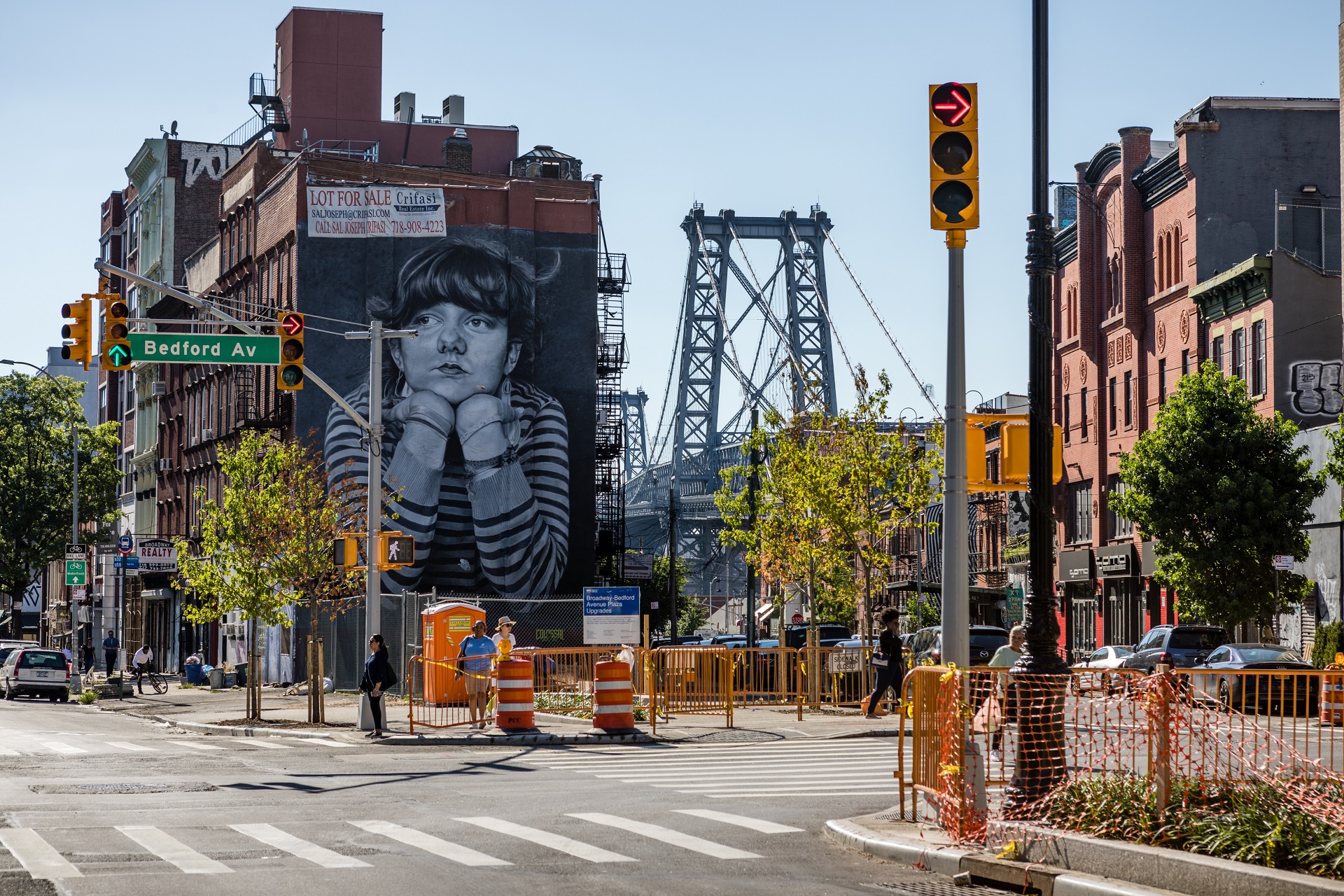Brooklyn officials: NY state must partner with city to build ‘BQGreen’
Would cap a section of BQE North with green parkland

WILLIAMSBURG — Brooklyn officials and community organizations gathered in Rodney Park North on Tuesday to demand that Gov. Kathy Hochul direct the state to partner with New York City to apply for federal infrastructure funds to build a green, parklike platform over a sunken portion of the Brooklyn-Queens Expressway (BQE) cutting through a Black, Latino and Orthodox Jewish section of South Williamsburg.
The trench, which falls into a state-owned section of the highway the city calls BQE North, has divided the neighborhood for 70 years, and pollution from the interstate highway has affected the health, economy and opportunities of residents for generations.
The city is willing to be a co-applicant with the state on the project, dubbed BQGreen, which has been in a preliminary planning stage for more than a decade, Brooklyn Borough President Antonio Reynoso and Rep. Nydia Velazquez said.
